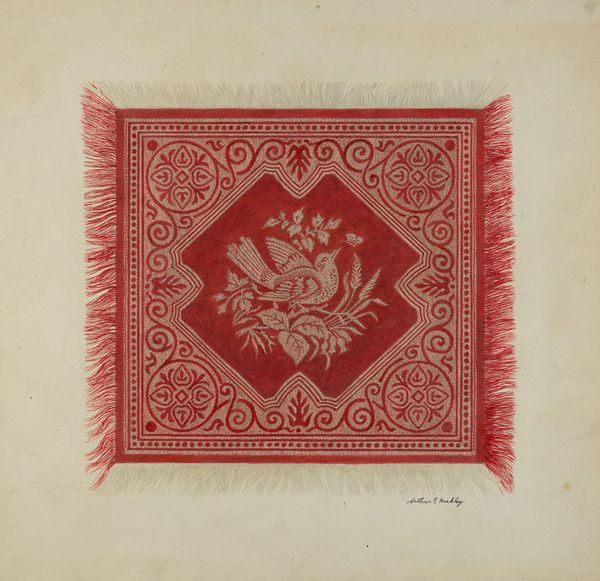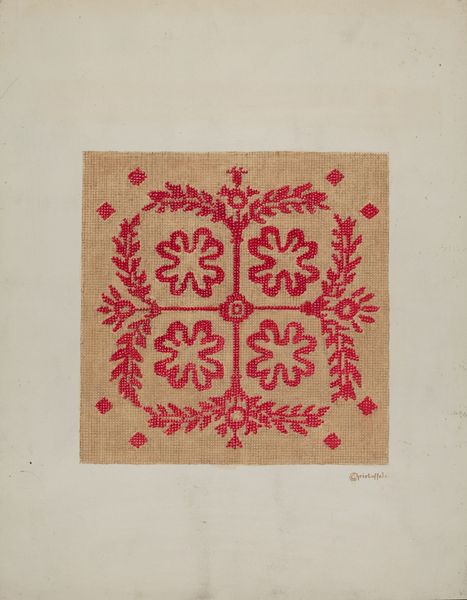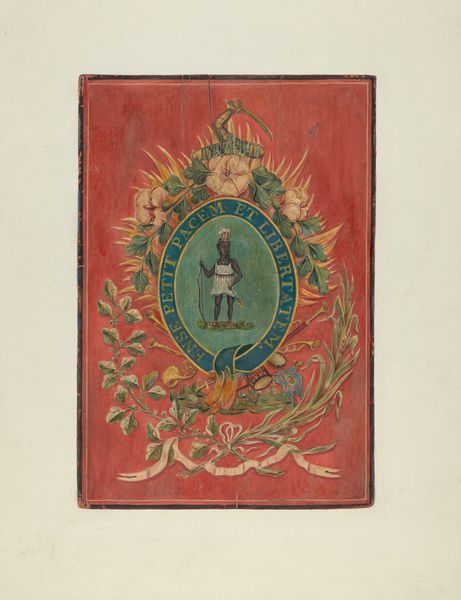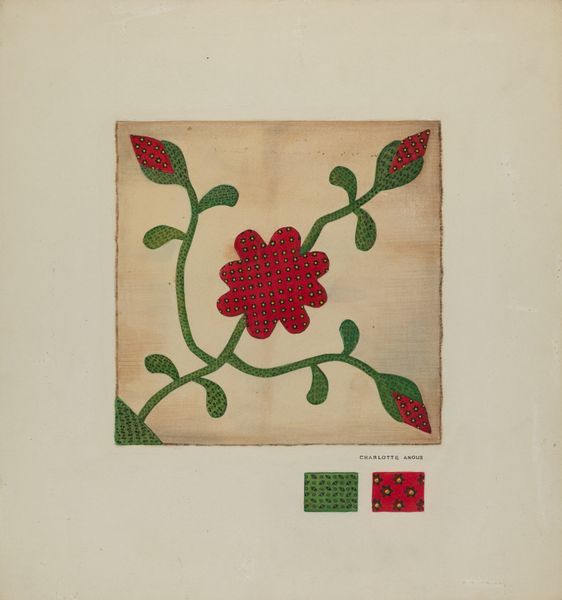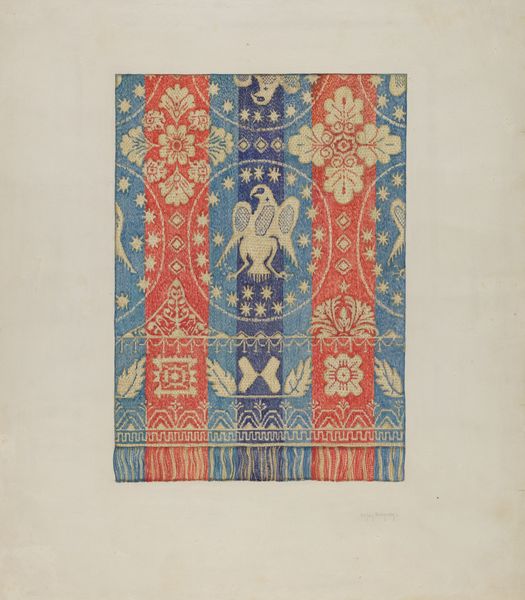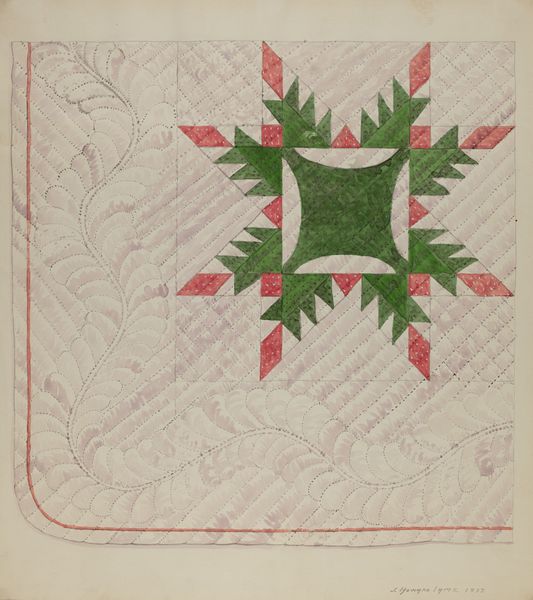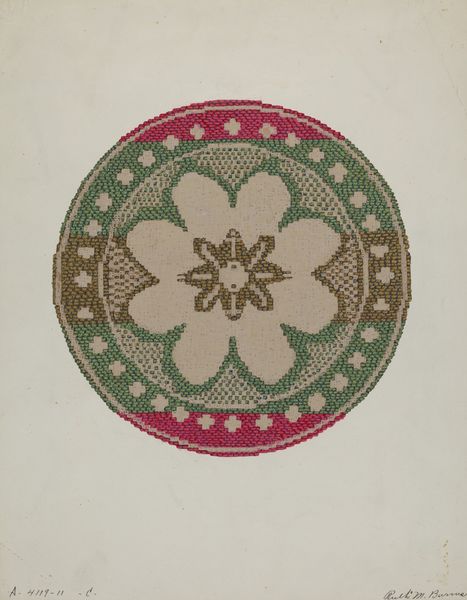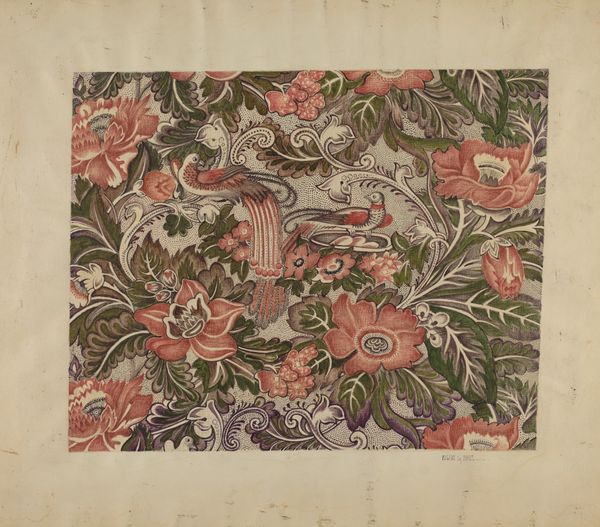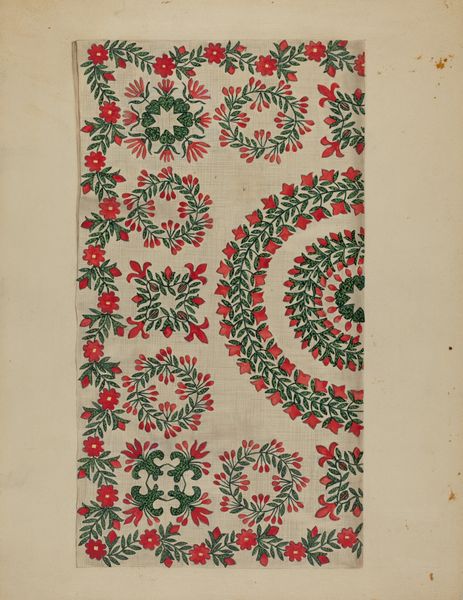
drawing, paper, pencil
#
drawing
#
paper
#
pencil
#
decorative-art
Dimensions: overall: 35.6 x 27.9 cm (14 x 11 in.)
Copyright: National Gallery of Art: CC0 1.0
Editor: Here we have "Shelf Lambrequin," a drawing in pencil on paper by Arthur G. Merkley, created around 1938. The colors are striking, the red contrasting the green and white floral design. It feels very precise, like a technical drawing for a textile pattern. What jumps out at you when you see this piece? Curator: The date is quite suggestive. 1938 places this in the late Depression era in the United States. Decorative arts, like this proposed shelf covering, saw a resurgence as people looked for affordable ways to beautify their homes. Mass production had made some items cheaper, but handcrafted designs signaled individuality and a personal touch, things often prized during economic hardship. Does that inform how you perceive the drawing? Editor: That’s interesting; I hadn’t considered the economic context. So, do you think the drawing itself then functions as a kind of democratizing tool? Making design accessible for reproduction by ordinary people? Curator: Precisely. It's likely this design was intended for a publication, maybe a magazine or pamphlet offering craft projects. Think about the social role of women at the time: home decoration was a key part of their domain. Designs like this both celebrated and, in a way, confined women to the domestic sphere. It catered to them and, perhaps subtly, reinforced their roles. Does the floral motif say anything to you? Editor: Well, flowers are often associated with femininity, right? But in this case, it also seems… practical? Easy enough to stitch for someone without advanced skills. Curator: Yes, I think you are right. Also consider that such shelf coverings were very popular and could give some status to the maker and/or owner. So, to summarize, this seemingly simple drawing encapsulates a whole discourse on class, gender, and the desire for beauty in a period of economic constraint. What are your concluding thoughts now? Editor: I see it very differently now! It's not just a pretty drawing, but a window into the social fabric of its time, reflecting both opportunities and constraints. Thank you!
Comments
No comments
Be the first to comment and join the conversation on the ultimate creative platform.
